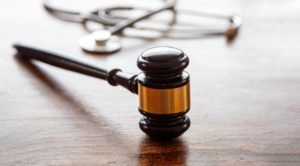Although Minnesota follows a no-fault system when it comes to car insurance claims, there are scenarios in which injured parties may seek compensation from the at-fault motorist. But before they can recover a single dollar from the opposing party, they must be able to prove negligence played a role in the incident.
Since there are countless ways for drivers to be negligent while behind the wheel, there are also countless kinds of evidence to prove it; however, there are certain types of proof that are valuable in virtually all car accident claims. These include:
- Official Police Reports: Responding officers are going to question everyone at the scene. If the other motorist admits fault or accepts blame, police are going to note as much in the official accident report. Under Minnesota’s implied consent law, police also have the right to administer chemical tests if they believe anyone involved was driving while impaired. Whether they conduct blood, breath, or urine tests will be noted in the report, as well, and the results of these tests can also be used as evidence of negligence.
- Photographs of the Wreckage: The arrangement of the vehicles at the scene can reveal what happened in the seconds leading up to the crash. If one car crossed over the centerline and struck another vehicle head on, for example, photographs of the wreckage will indicate as much.
- Eyewitness Testimony: Passengers, nearby motorists, cyclists, and/or pedestrians might have seen what happened in the moments before the collision. Although eyewitness testimony is not the most reliable kind of evidence, it can corroborate your version of events and provide additional insight regarding the cause of the wreck.
- Statements from Accident Reconstruction Experts: When a crash involves multiple vehicles or liability is unclear, claimants can turn to accident reconstruction experts for help. These professionals can deduce what happened based on the available evidence.
Gathering the evidence mentioned above may sound like a lot of work, but doing so is not necessary following every car accident because of Minnesota’s no-fault laws. Injured parties only need to prove negligence if they pursue a claim against the at-fault driver, which they may do if the collision results in:
- Permanent injury;
- Permanent scarring or disfigurement;
- At least 60 days of disability;
- At least $4,000 in reasonable medical expenses, excluding diagnostic procedures like X-rays and MRI scans; or
- Death.
Discuss Your Case with a Car Accident Lawyer in St. Cloud, Minnesota
If you were hurt in a motor-vehicle collision with a drunk, distracted, or reckless driver, a personal injury attorney from Bradshaw & Bryant will help you gather the kinds of evidence mentioned above to prove negligence. For six consecutive years, attorney Michael Bryant has been recognized as a SuperLawyer and has been named among the state’s Top 40 Personal Injury Lawyers by Minnesota Law & Politics. Call 320-259-5414 or fill out our Contact Form to schedule a free case evaluation with a car accident attorney in St. Cloud.

A founding partner with Bradshaw & Bryant, Mike Bryant has always fought to find justice for his clients—knowing that legal troubles, both personal injury and criminal, can be devastating for a family. Voted a Top 40 Personal Injury "Super Lawyer" multiple years, Mr. Bryant has also been voted one of the Top 100 Minnesota "Super Lawyers" four times.










Comments for this article are closed.